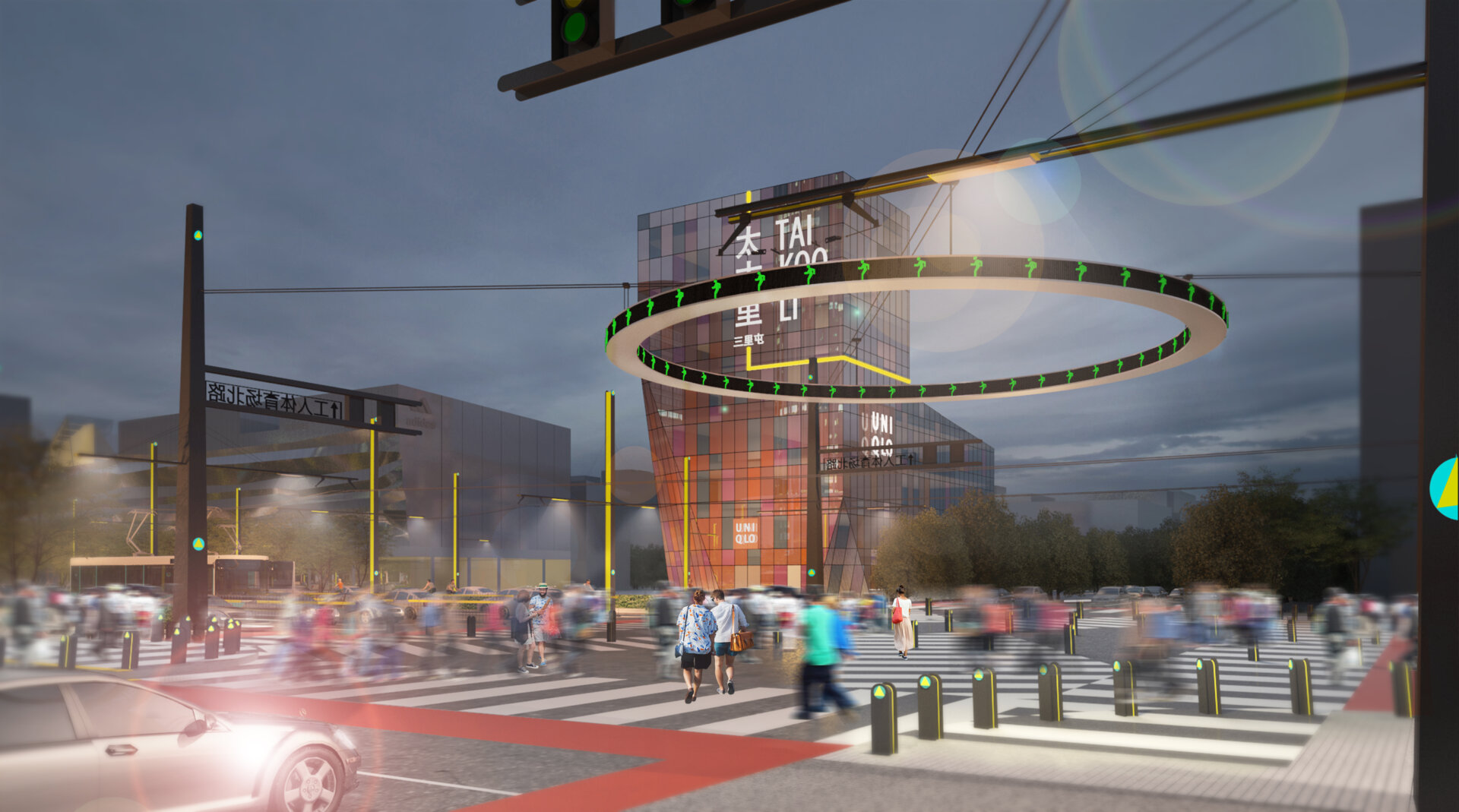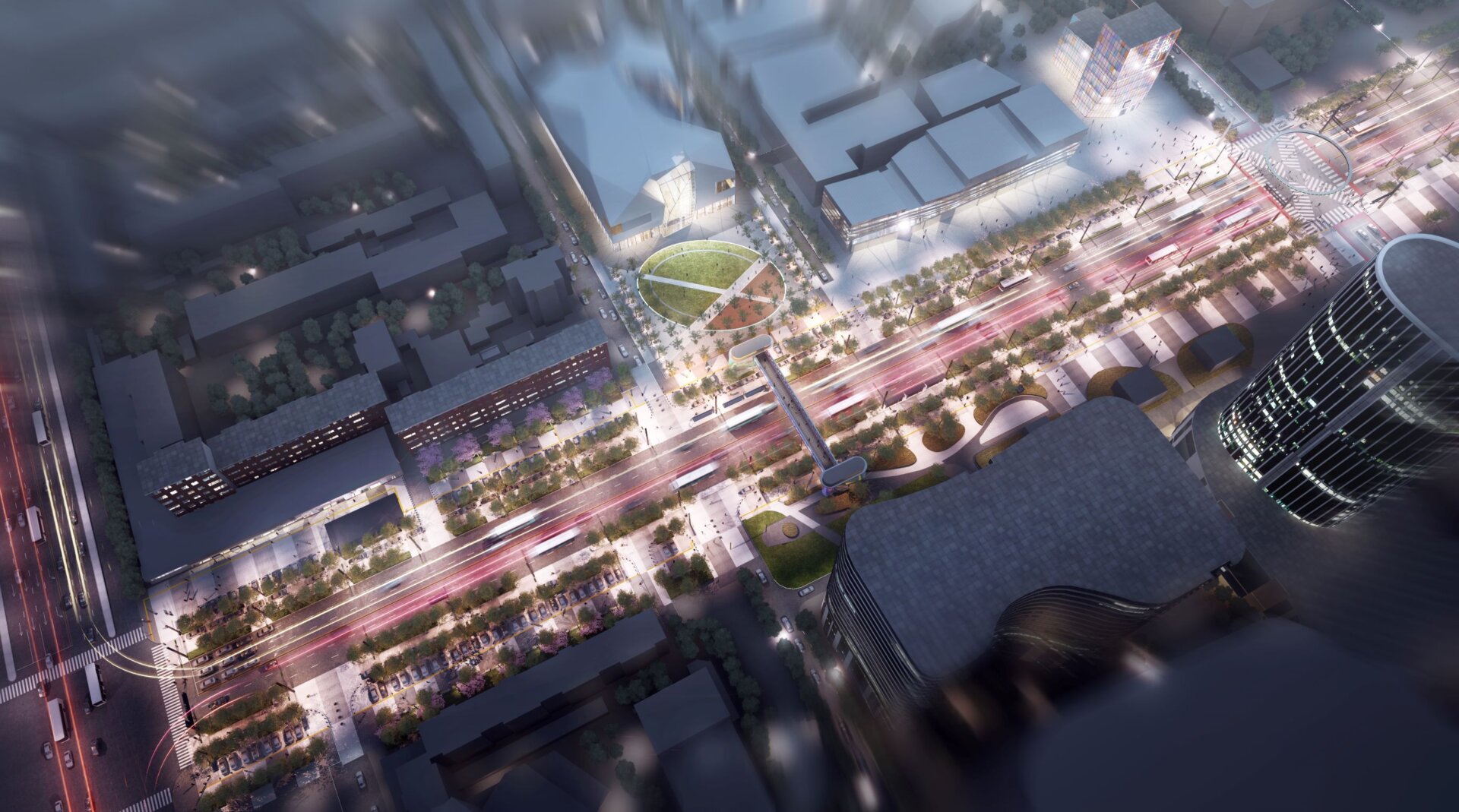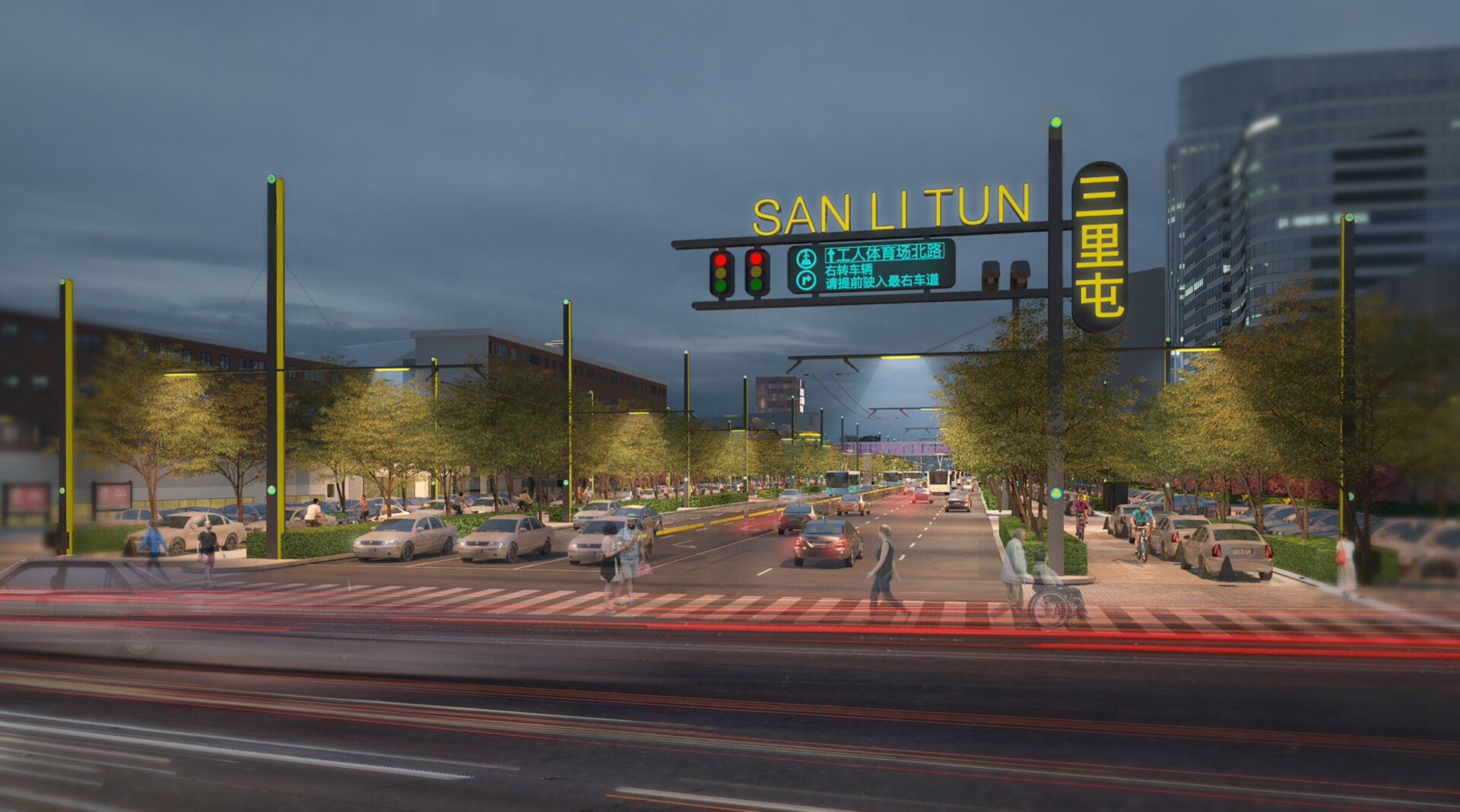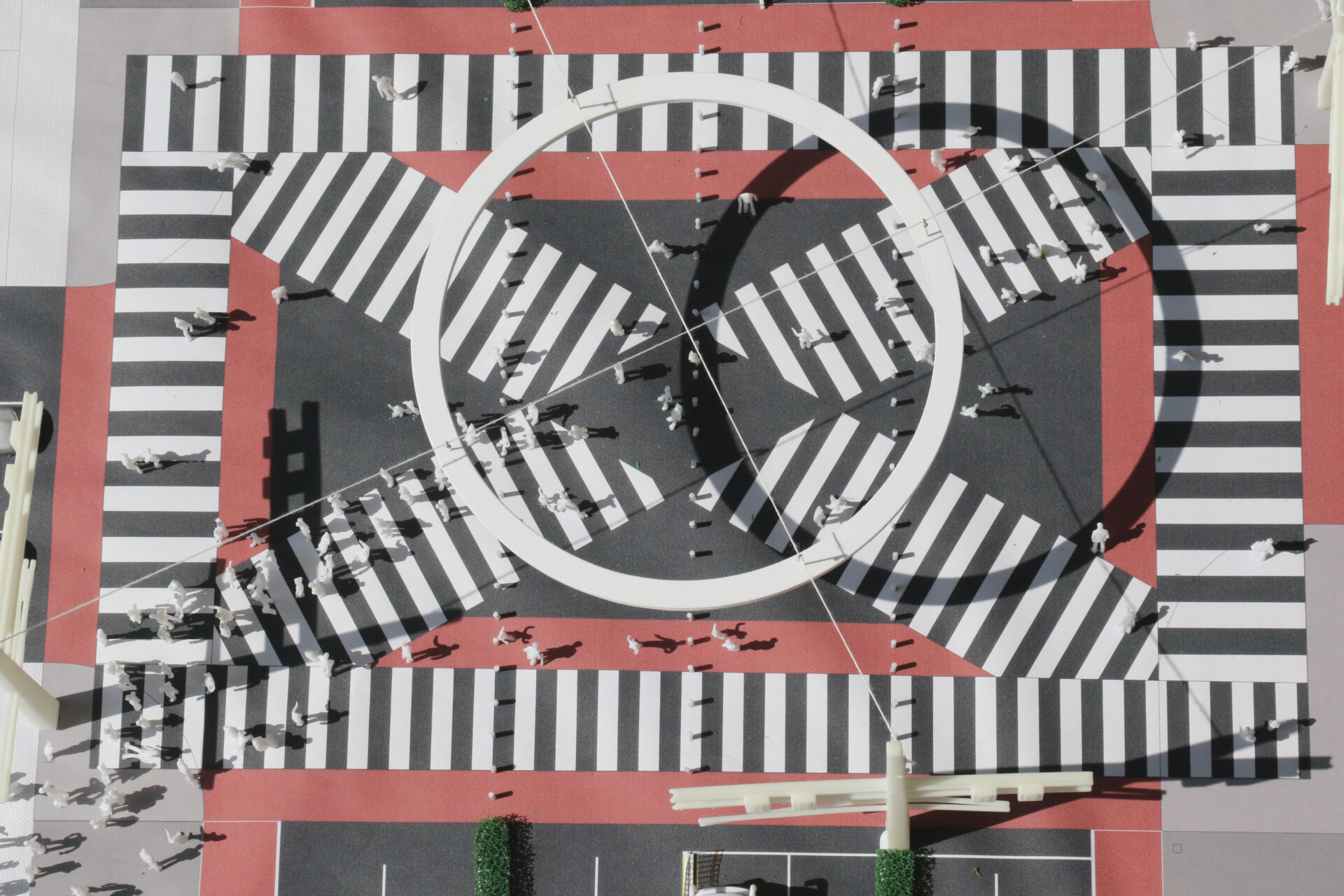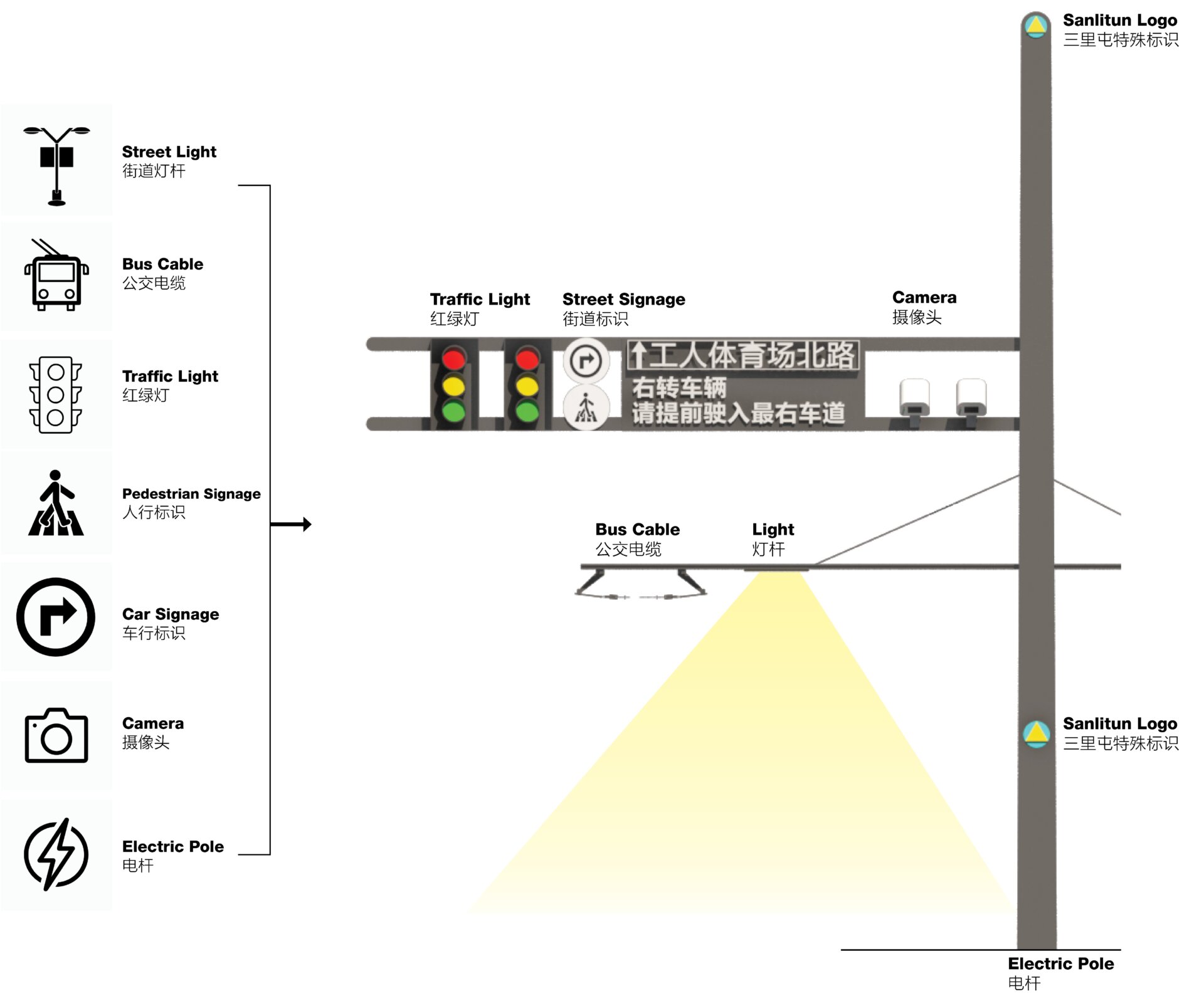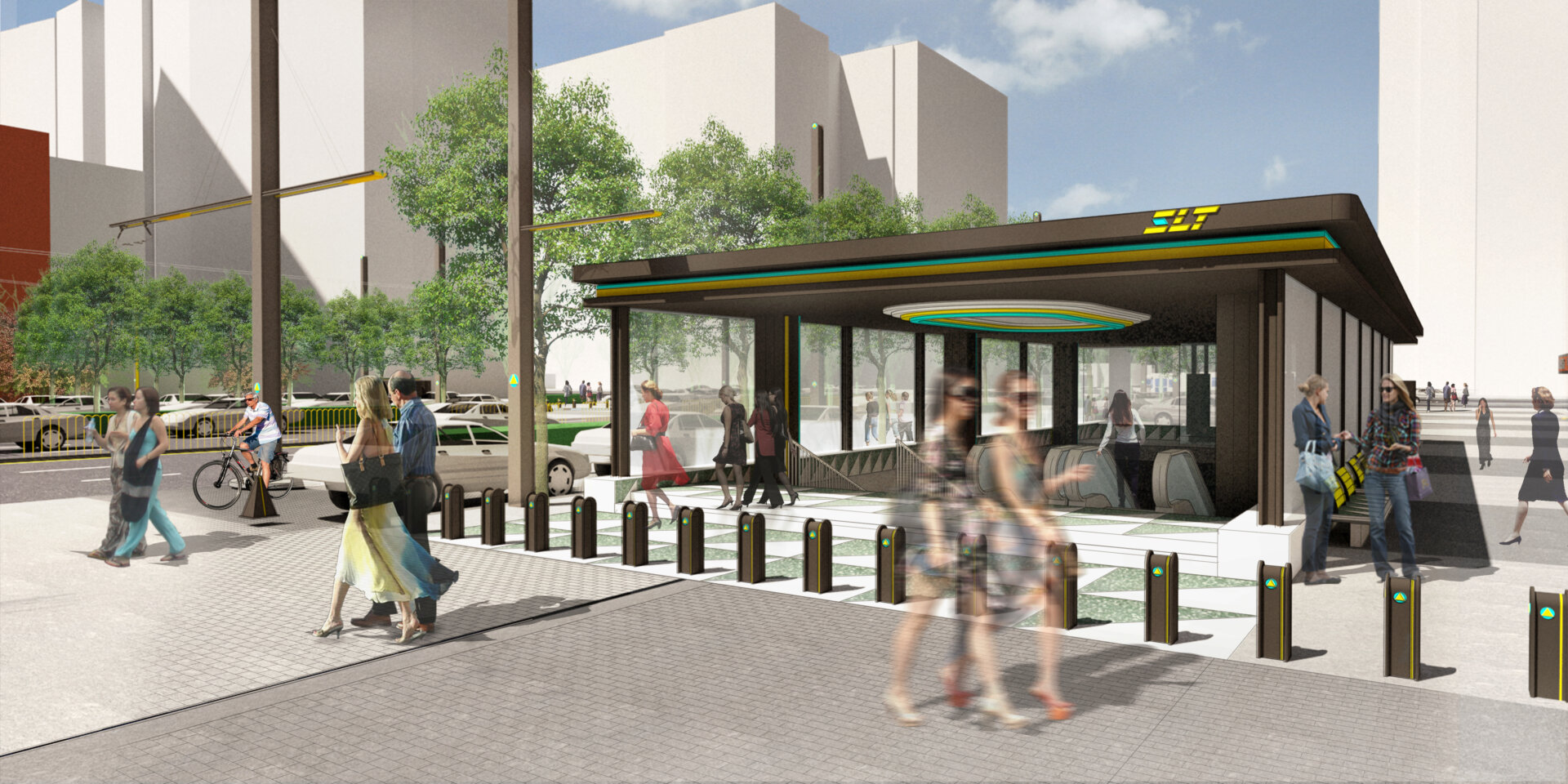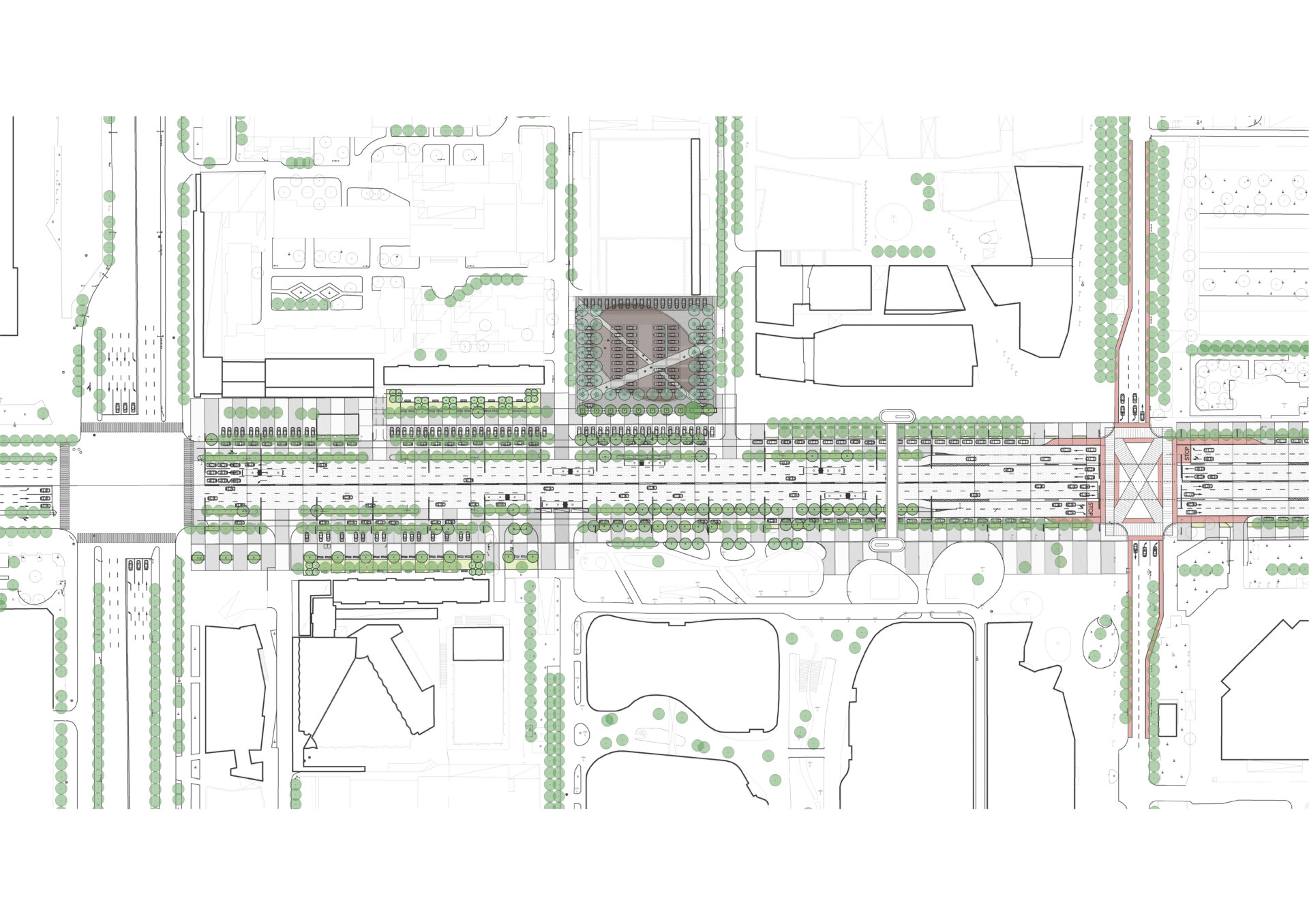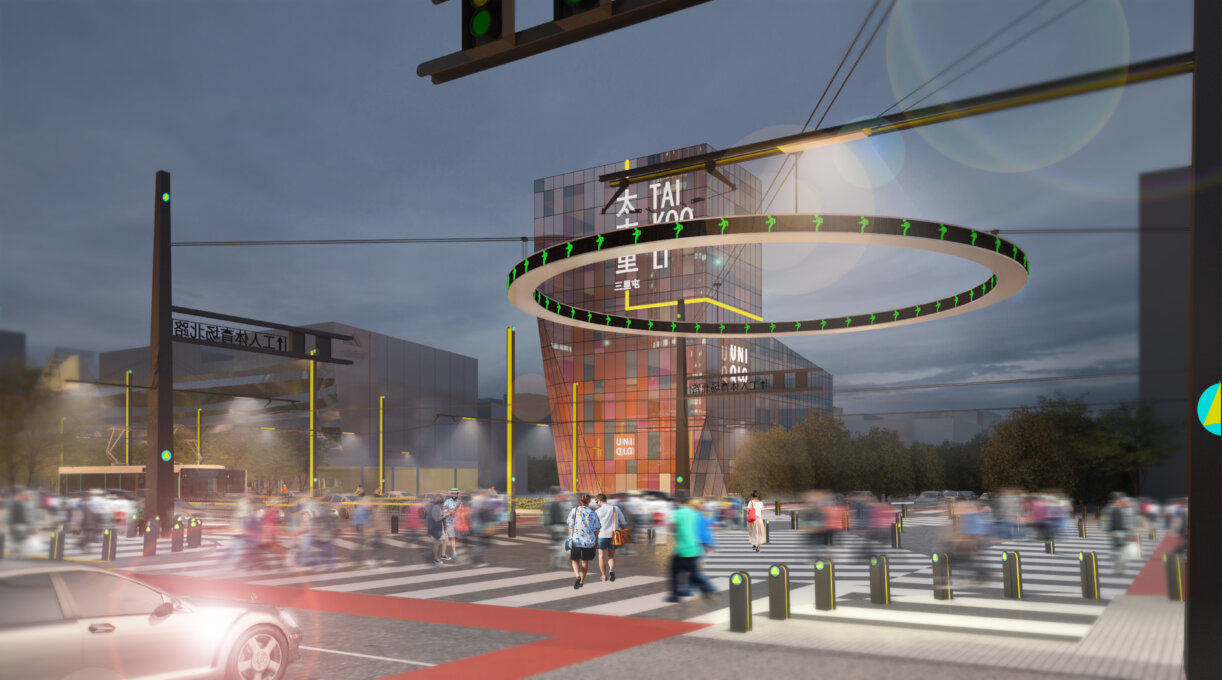

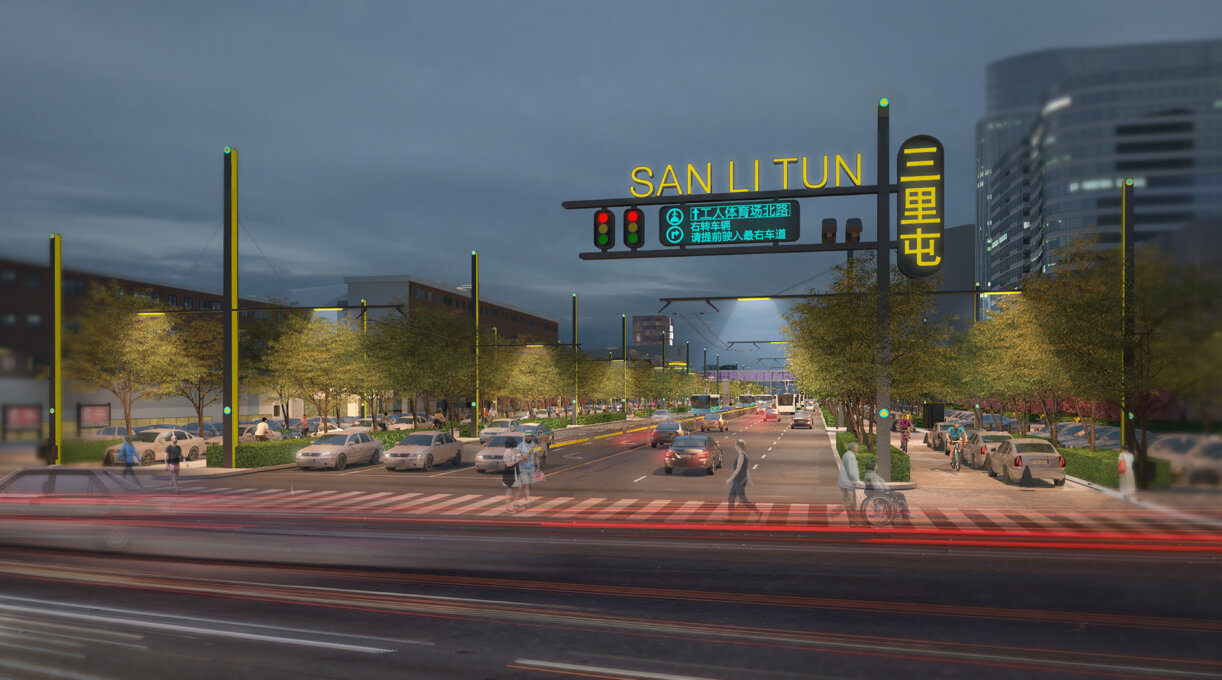
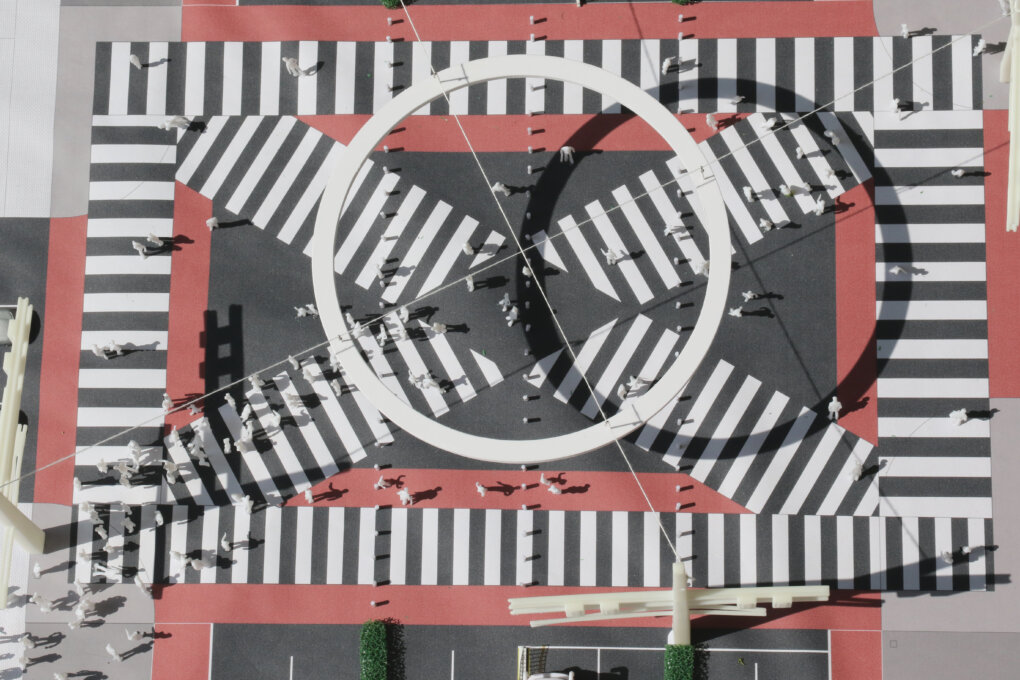
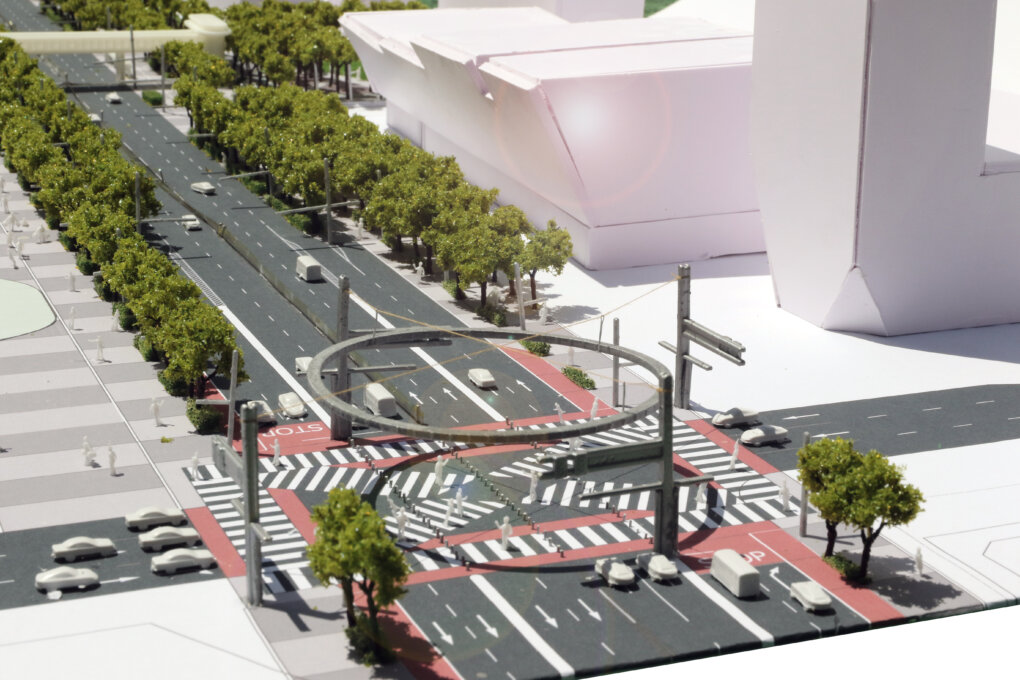
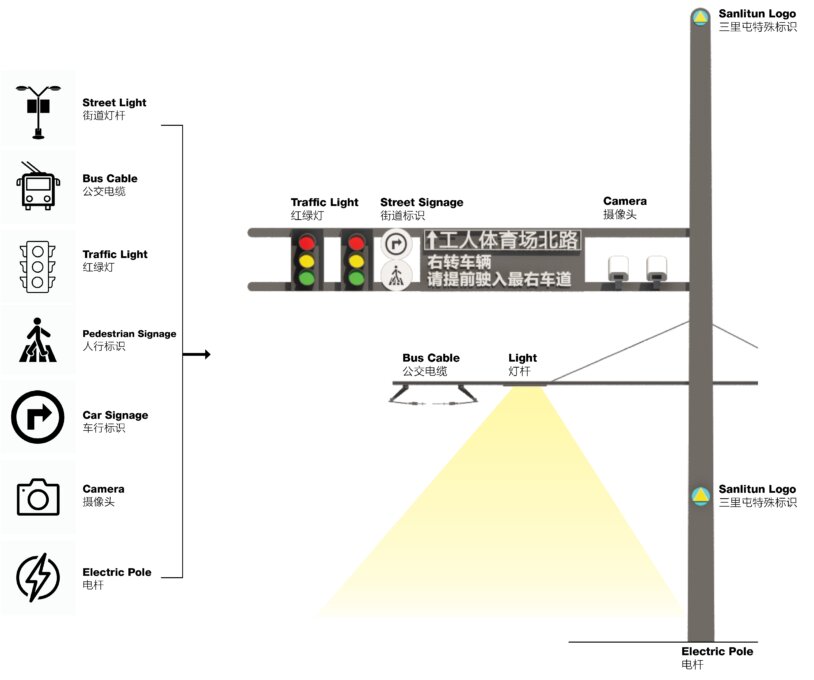
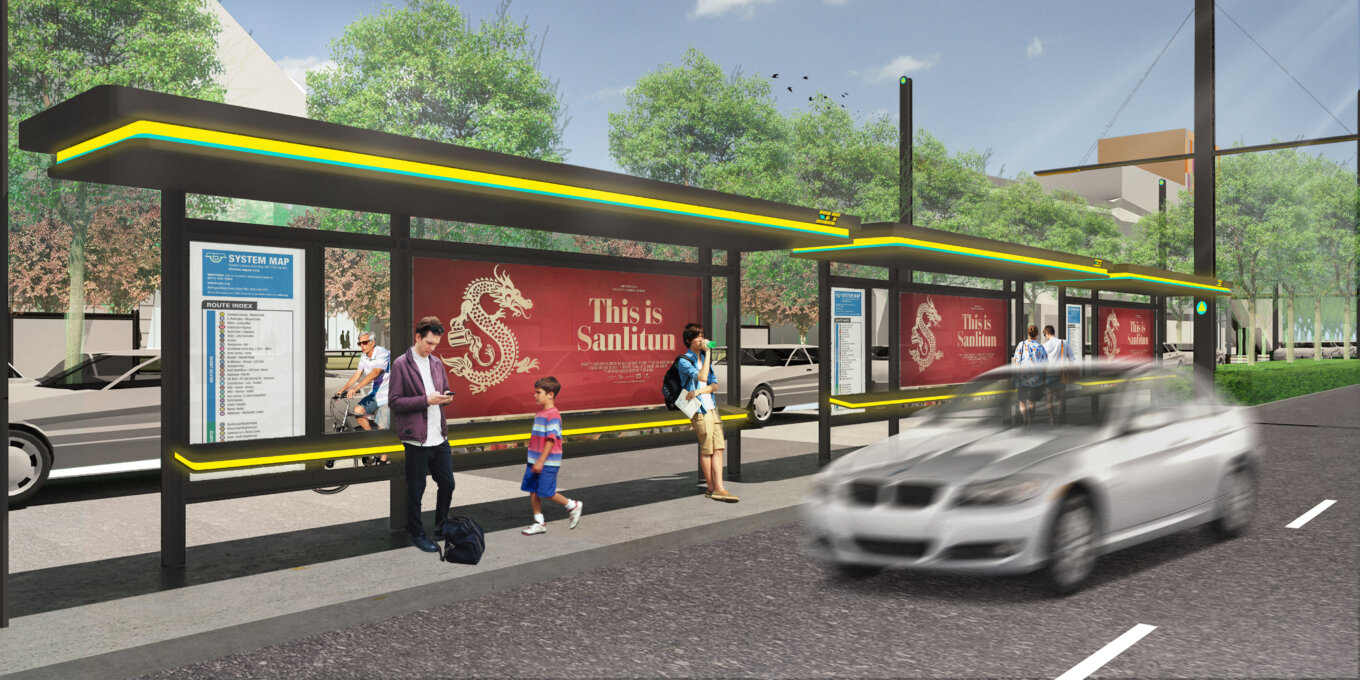
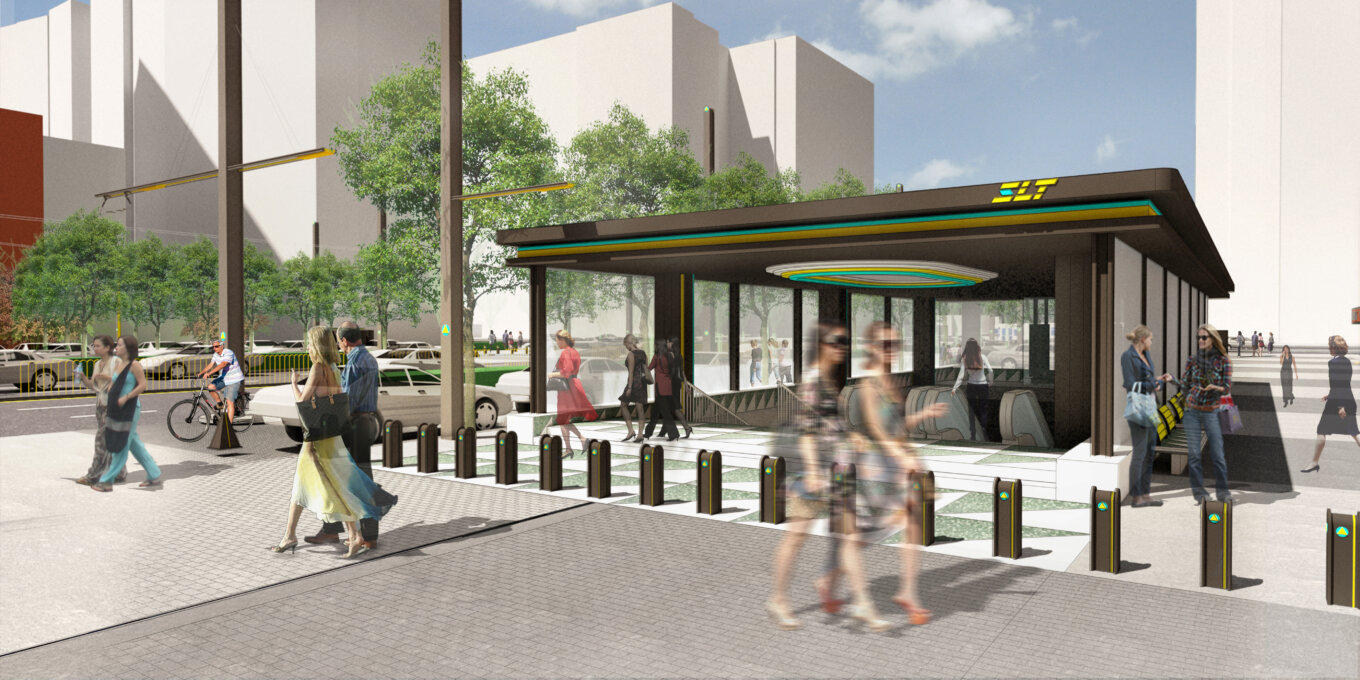


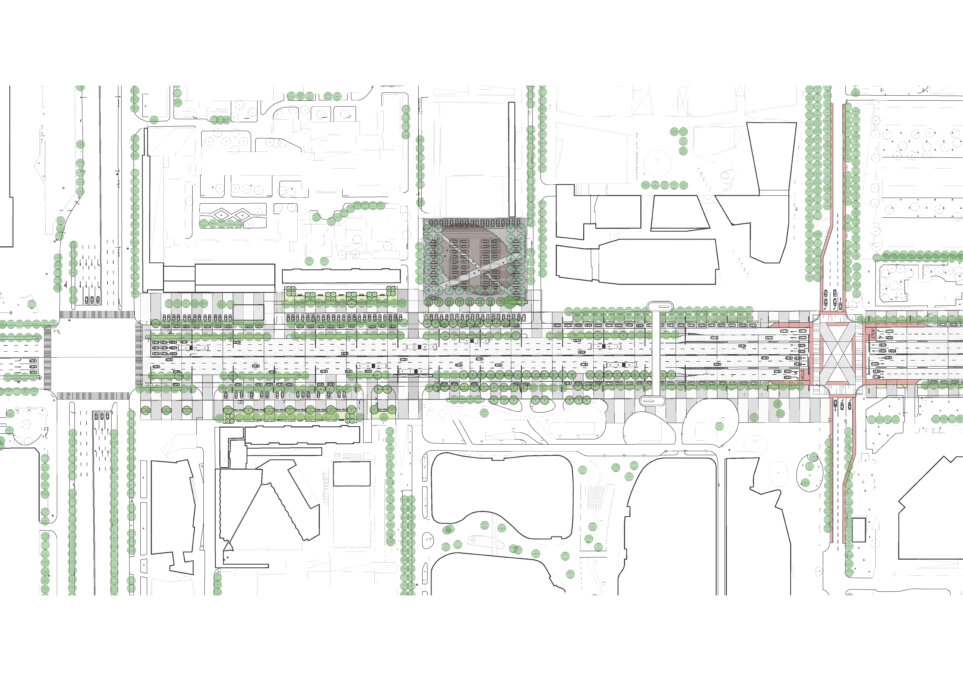
Share to
Sanlitun Streetscape Renovation
By : Ballistic Architecture Machine (BAM)
GRANDS PRIX DU DESIGN – 15th edition
Discipline : Landscape & Territories
Categories : Concept / concept in landscape and/or urban development : Silver Certification
The site is at the heart of the Sanlitun sub-district one of the liveliest shopping and entertainment districts in Beijing. As a result of Sanlitun being Beijing’s second embassy district, over its history, it developed into a place where many different cultures and people met and interacted. It is no surprise that over the years, the sub-district developed a mix of foreign restaurants, bars, nightclubs, boutique hotels, shopping, brewpubs, residential, offices, and all the associated accouterments of a vibrant entertainment district. Beijing is a large and vast city with few walkable regions. The old city and hutongs, the 798 Arts district, and the Sanlitun sub-district are among the few and therefore draw significant foot traffic.
The site of BAM’s proposed intervention is Gongtibeilu (Worker’s Stadium North Road) which is a major arterial road running East-West through the city, dividing the Sanlitun entertainment district into a northern portion and southern portion. East-west automobile traffic dominates the road, while north-south pedestrian traffic dominates the intersections. The western bound of the design scope is Xindonglu. The intersection of Xindong and Gongtibei is under construction as 2 new metro lines will intersect at this point not only creating a large underground interchange but greatly increasing the already over-crowded foot traffic in the region.
Currently, lighting, signage, CCTV, bus electricity, all utilize different poles with a limited degree of sharing, creating significant urban clutter. BAM’s design not only unifies items such as poles but creates a branded landscape that allows for further unification of disparate urban furniture elements, from bollards to trash cans, street cones, and future proposed metro entries. The unification into a common language extends beyond the urban elements and even proposes police and service personnel outfits.
The focal element of the design is the bustling intersection of Sanlitun Nan and Bei lu and Gongti. This is the point where the heavy auto traffic and pedestrian flow intersect. Working with transportation consultant Systematica, BAM developed a series of workable scramble cross options, which apart from solving some of the congestion issues, creates a landscape icon that promotes the importance of walkability in a city of vast proportion and heavily reliant on the automobile.
Collaboration
Landscape Architecture : Ballistic Architecture Machine (BAM)
Engineering : Systematica Traffic Engineering



